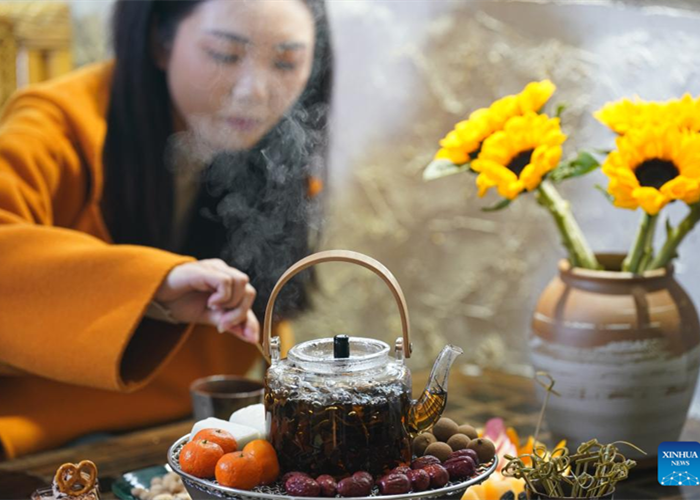Craftswoman, 80, Promotes Zhuang Needlework Tradition
 |
|
Huang Xiaoqin (L), a folk craft master in Jiuzhou, an ancient town in Jingxi City, South China's Guangxi Zhuang Autonomous Region, teaches her apprentice how to make a silk ball. [CNSPHOTO/Zeng Kaihong] |
Huang Xiaoqin of the Zhuang ethnic group, has given a lifetime of service to making xiuqiu (a ball made of strips of silk), a handicraft listed as a national-level intangible cultural heritage.
The 80-year-old woman was dedicated to continuous improvement and innovation of the folk craft-making skills. She has trained more than 1,000 apprentices in Jiuzhou, an ancient town in Jingxi City, South China's Guangxi Zhuang Autonomous Region, which is now known as the "hometown of silk balls in China."
"I think I could no longer live without xiuqiu," Huang said.
Xiuqiu, originally sewn by Zhuang women, is meant to express affections between young lovers. It often has 12 "petals" that are stitched together to form a flower ball, and its primary colors are mostly red, yellow and green, combined in auspicious and festive patterns such as birds and beasts.
Huang started to learn the embroidery techniques at the age of 6. Given her unremitting efforts, she mastered many embroidery skills.
In 1995, she stood out from a handmade art contest held by the All-China Women's Federation, and won an honorary title of "Chinese Ingenious Woman."
To promote the time-honored technique, Huang and her daughter-in-law once designed a giant silk ball with 30 petals and a diameter of about 1.5 meters for the 10th anniversary of Hong Kong's return to the motherland.
In her later years, the heritage protector paid much attention to the production and inheritance of xiuqiu embroidery. She taught apprentices face-to-face so that the needle tradition could be carried forward and local people could get rid of poverty and become rich.
As of two years ago, half of the 2,300 villagers in Jiuzhou were engaged in the industry of making xiuqiu. The annual output exceeded 500,000, with an output value of nearly a million yuan (US $143,102.46). The products today are exported to the United States, Japan, Australia, South Africa, some countries in Southeast Asia and many other places around the world.
 |
| Some xiuqiu handiworks made in Jiuzhou Village, Jingxi City, South China's Guangxi Zhuang Autonomous Region [CNSPHOTO/Zeng Kaihong] |
(Source: CNSPHOTO/Translated and edited by Women of China)
Please understand that womenofchina.cn,a non-profit, information-communication website, cannot reach every writer before using articles and images. For copyright issues, please contact us by emailing: website@womenofchina.cn. The articles published and opinions expressed on this website represent the opinions of writers and are not necessarily shared by womenofchina.cn.








 WeChat
WeChat Weibo
Weibo 京公网安备 11010102004314号
京公网安备 11010102004314号